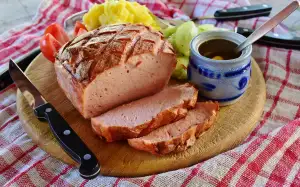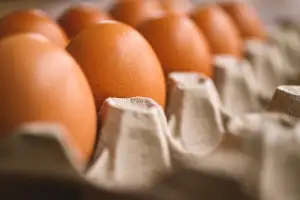Delicious Dutch Oven Bread Recipes: Master the Art of Baking Bread in a Dutch Oven

Bread baking is an art that has been practiced for centuries, and there are countless methods and techniques to achieve the perfect loaf. One such method that has gained popularity in recent years is baking bread in a Dutch oven. This traditional cooking vessel, known for its versatility and heat retention properties, can produce bread with a crispy crust and a soft, tender interior. In this article, we will explore the world of Dutch oven bread recipes and discover how you can master the art of baking delicious bread right in your own kitchen. So grab your apron and get ready to embark on a culinary adventure filled with the aroma of freshly baked bread!
Benefits of Baking Bread in a Dutch Oven
Baking bread in a Dutch oven offers numerous benefits that make it a popular choice among home bakers. Firstly, the Dutch oven's thick and heavy construction helps to create the perfect environment for baking bread. It retains heat exceptionally well, ensuring even distribution throughout the dough, resulting in a beautifully golden and crispy crust.
The tight-fitting lid of the Dutch oven traps steam released from the dough during baking. This steam helps to create a moist and tender interior while also promoting excellent rise and texture. The result is a loaf with a soft, chewy crumb that is simply irresistible.
Another advantage of using a Dutch oven is its versatility. Not only can it be used for baking bread, but it can also be used for cooking stews, soups, and roasts. This multi-purpose functionality makes it an essential tool in any kitchen.
Additionally, baking bread in a Dutch oven requires minimal effort compared to other methods. There is no need for complicated steam-generating techniques or frequent spraying of water into the oven. Simply preheat the Dutch oven along with the oven itself, transfer the dough into it, cover with the lid, and let it work its magic.
Lastly, baking bread in a Dutch oven allows for greater control over the baking process. The enclosed space prevents excessive moisture loss during baking, resulting in loaves that stay fresh longer. The ability to adjust temperature settings easily ensures consistent results every time.
In summary, using a Dutch oven for bread baking provides several advantages: excellent heat retention and distribution, creating a crispy crust; steam trapping capabilities for moist and tender interiors; versatility for various cooking needs; simplicity in execution; and greater control over the final product. These benefits make mastering the art of baking bread in a Dutch oven truly worthwhile.
Essential Tools and Ingredients for Dutch Oven Bread
When it comes to baking bread in a Dutch oven, there are a few essential tools and ingredients that you will need. First and foremost, you will need a Dutch oven with a tight-fitting lid. This heavy-bottomed pot is perfect for creating the steam needed to achieve a crispy crust.
In addition to the Dutch oven, you will also need a mixing bowl, measuring cups and spoons, a whisk or wooden spoon for mixing the dough, and a bench scraper or spatula for shaping the bread.
As for ingredients, you will need flour, yeast, salt, and water. It's important to use high-quality flour for the best results. You can choose between all-purpose flour or bread flour depending on your preference. Yeast is essential for leavening the dough and can be either active dry yeast or instant yeast.
Salt not only adds flavor but also helps control fermentation. Lastly, water is needed to hydrate the dough and create steam during baking.
Having these tools and ingredients on hand will ensure that you are well-equipped to make delicious Dutch oven bread at home.
Basic Dutch Oven Bread Recipe
To master the art of baking bread in a Dutch oven, you need a simple yet reliable recipe. Here's a basic recipe to get you started:
Ingredients:
- 3 cups all-purpose flour
- 1 ½ teaspoons salt
- 1 ½ teaspoons instant yeast
- 1 ½ cups warm water
Instructions:
1. In a large mixing bowl, combine the flour, salt, and yeast.
2. Gradually add the warm water while stirring with a wooden spoon until a sticky dough forms.
3. Cover the bowl with plastic wrap or a clean kitchen towel and let it rise for about 12-18 hours at room temperature. The dough should double in size and have small bubbles on the surface.
4. Preheat your oven to 450°F (230°C) and place an empty Dutch oven with its lid on inside to heat up as well.
5. Once the oven is preheated, carefully remove the hot Dutch oven from the oven using oven mitts.
6. Sprinkle some flour on your hands and shape the dough into a ball by folding it over itself several times.
7. Place the dough into the preheated Dutch oven and cover it with the lid.
8. Bake for 30 minutes covered, then remove the lid and bake for an additional 15 minutes or until golden brown.
9. Carefully remove the bread from the Dutch oven and let it cool on a wire rack before slicing.
This basic recipe will give you a crusty and flavorful loaf of bread that's perfect for any occasion. Experiment with different types of flour or add herbs and spices to customize your bread to your liking.
Enjoy!
Variations and Additions to Dutch Oven Bread
One of the great things about baking bread in a Dutch oven is the endless possibilities for variations and additions. You can experiment with different types of flour, such as whole wheat or rye, to create unique flavors and textures. Adding herbs, spices, or even cheese can take your bread to a whole new level.
For a savory twist, try adding rosemary and garlic to your dough. The aroma that fills your kitchen while it bakes will be simply irresistible. Or if you have a sweet tooth, consider incorporating dried fruits like raisins or cranberries into the dough. The burst of sweetness in every bite will be a delightful surprise.
You can also play around with different shapes and sizes. Instead of making a traditional loaf, try shaping the dough into rolls or baguettes. Not only will they look impressive on your table, but they'll also bake faster and have a wonderfully crusty exterior.
Don't be afraid to get creative with toppings as well. Sprinkle some sesame seeds or poppy seeds on top before baking for an added crunch. Or brush the loaf with melted butter and sprinkle some sea salt for a rich and savory finish.
The possibilities are truly endless when it comes to variations and additions in Dutch oven bread recipes. Let your imagination run wild and enjoy the satisfaction of creating your own unique bread masterpiece.
Tips and Tricks for Perfect Dutch Oven Bread
1. Preheat the Dutch oven: To ensure a crispy crust, preheat the Dutch oven along with the oven. This will create a hot environment for the bread to bake evenly.
2. Use parchment paper: Line the bottom of the Dutch oven with parchment paper before placing the dough inside. This will prevent sticking and make it easier to remove the bread once it's baked.
3. Score the dough: Before baking, score the top of the dough with a sharp knife or razor blade. This allows steam to escape during baking, resulting in a beautiful, crackly crust.
4. Experiment with different flours: Don't be afraid to try different types of flour in your Dutch oven bread recipes. Whole wheat, rye, or spelt flour can add unique flavors and textures to your loaves.
5. Add steam: To achieve a bakery-style crust, create steam in the oven by placing a small pan filled with water on the lower rack while baking. The steam helps develop a crisp exterior.
6. Let it rest: After removing the bread from the Dutch oven, allow it to cool on a wire rack for at least 30 minutes before slicing into it. This resting period allows for better texture and flavor development.
7. Practice patience: It's tempting to slice into freshly baked bread right away, but resist! Allowing your loaf to cool completely before cutting will result in neater slices and better texture.
Remember, practice makes perfect when it comes to baking bread in a Dutch oven. Don't be discouraged if your first attempts aren't flawless – embrace the learning process and enjoy the delicious results!
Frequently Asked Questions about Dutch Oven Bread
1. Can I use any type of Dutch oven for baking bread?
Yes, you can use any type of Dutch oven as long as it is oven-safe and has a tight-fitting lid. Cast iron or enameled cast iron Dutch ovens are popular choices for their heat retention properties.
2. Do I need to preheat the Dutch oven before baking bread?
Yes, it is important to preheat the Dutch oven along with your oven. This ensures that the bread gets a good rise and develops a crispy crust.
3. How long should I bake the bread in the Dutch oven?
The baking time can vary depending on the recipe and size of your loaf. Generally, it takes around 30-40 minutes with the lid on and an additional 10-15 minutes with the lid off to achieve a golden brown crust.
4. Can I use parchment paper in my Dutch oven?
Yes, using parchment paper can make it easier to remove the bread from the Dutch oven without sticking. Simply place a sheet of parchment paper at the bottom before placing your dough.
5. Can I add ingredients like herbs or cheese to my Dutch oven bread?
Absolutely! Adding herbs, cheese, or even dried fruits and nuts can enhance the flavor of your bread. Mix them into the dough during the initial mixing stage or sprinkle them on top before baking.
6. How do I store leftover Dutch oven bread?
Allow your bread to cool completely before storing it in an airtight container or bag at room temperature for up to 2-3 days. For longer storage, you can freeze sliced or whole loaves.
7. Can I make gluten-free bread in a Dutch oven?
Yes, you can make gluten-free bread in a Dutch oven by using gluten-free flour blends and following a suitable recipe that caters to dietary restrictions.
Remember, practice makes perfect when it comes to baking bread in a Dutch oven. Don't be afraid to experiment and enjoy the process of creating delicious homemade bread!
In conclusion, mastering the art of baking bread in a Dutch oven opens up a world of possibilities for creating delicious and crusty loaves right in your own kitchen. The benefits of using a Dutch oven are numerous, from the ability to create a perfect crust to achieving an even bake throughout. With just a few essential tools and ingredients, you can start baking your own homemade bread that will rival any bakery.
Experiment with different variations and additions to personalize your Dutch oven bread recipes. Whether it's adding herbs and spices for a savory loaf or incorporating dried fruits and nuts for a sweet treat, the options are endless. Don't be afraid to get creative and try new combinations!
Remember to follow some tips and tricks for perfect results every time. From preheating the Dutch oven to creating steam during baking, these small details can make a big difference in the final outcome of your bread.
Lastly, don't hesitate to explore frequently asked questions about Dutch oven bread to troubleshoot any issues you may encounter along the way. This will help you become more confident in your baking skills and ensure consistently delicious results.
So go ahead, gather your tools, stock up on ingredients, and embark on this delightful journey of baking fresh bread in a Dutch oven. The aroma that fills your home as you pull out that perfectly baked loaf will be worth every effort. Get ready to savor each bite of warm, crusty goodness - there's nothing quite like enjoying freshly baked Dutch oven bread!
Published: 06. 02. 2024
Category: Recipes



